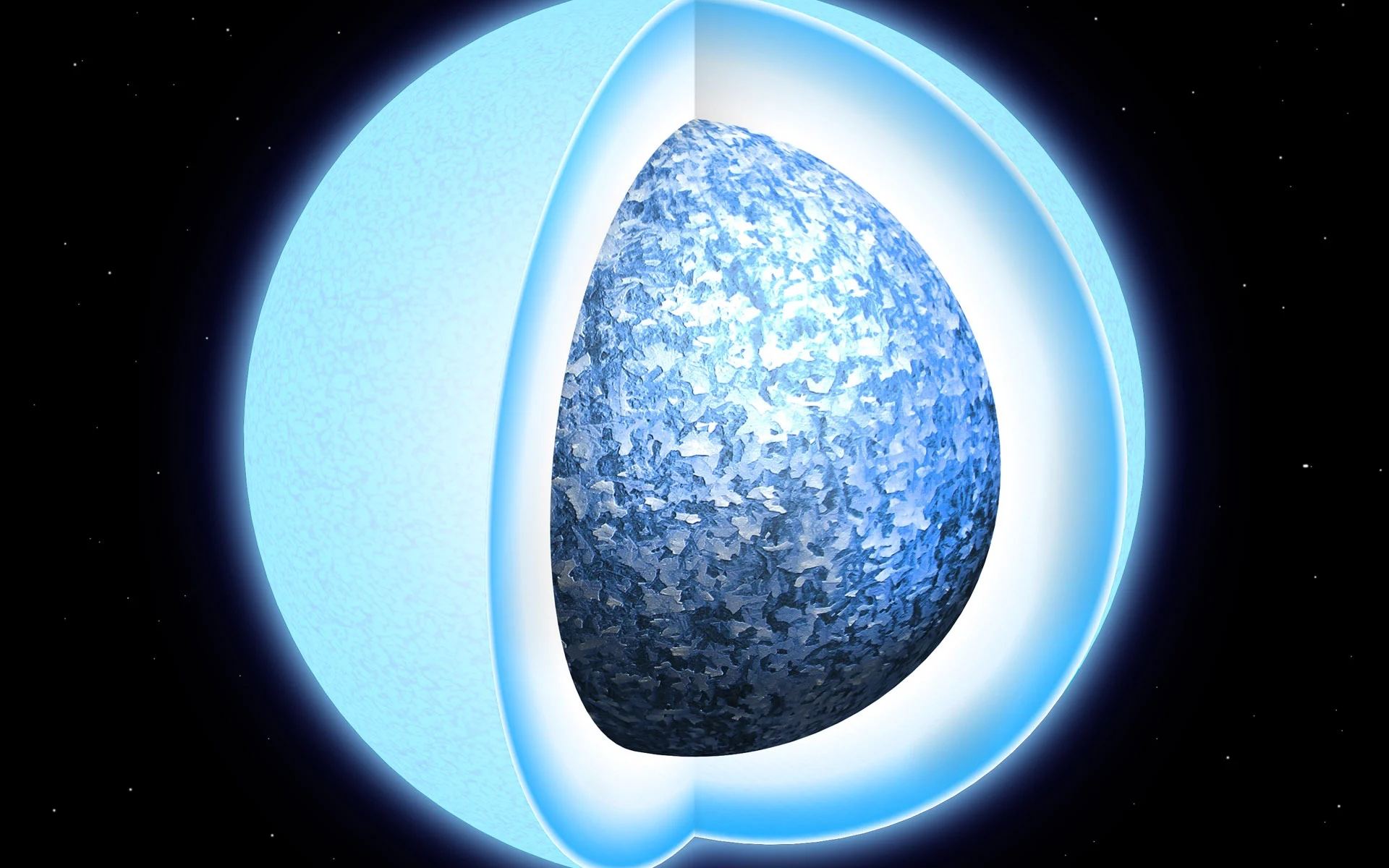At the end of their lives, most stars including the Sun will become white dwarfs. After a red dwarf or sun-like star consumes all the hydrogen and helium it can, the remains of the star will collapse under its own weight, shrinking ever more until the quantum pressure of electrons becomes strong enough to counter gravity. White dwarfs begin their days as brilliantly hot embers of degenerate matter and grow ever cooler and dimmer as they age.
Because a white dwarf doesn’t produce new energy through nuclear fusion, it has only remnant thermal energy to keep it warm. This fact allows astronomers to determine the age of a white dwarf by its temperature. Basically, the cooler a white dwarf is, the older it is. But there seem to be some exceptions. Astronomers have other ways to estimate the age of a white dwarf, such as comparing it to the age of the cluster of stars it’s in. They’ve found that some white dwarfs are a bit hotter than they should be. A new study may help explain why.

It has to do with the way the interior of a white dwarf cools over time. In its early days, a white dwarf has an exterior solid crust with a fluid interior, similar to the structure of a planet such as Earth. The interior is a hot fluid of degenerate matter, but as it cools it can crystalize. It’s generally been thought that crystalization initiates at the core where pressure is greatest, and then expands outward as the star cools. This means that white dwarfs experience a fast initial cooling, then a crystalization period where the surface temperature is fairly constant, and finally a final cooling period after core crystalization is over.
This new study shows how crystalization can occur in a different way. Rather than bulk crystalization, small crystals can form within the warm interior. Just as ice crystals are less dense than the surrounding water, so are these initial crystals of white dwarf matter. And like ice particles, these crystals float upward from the core. As a result, the crystals form an insulating layer around the still-hot core. In this model, white dwarfs don’t cool as much initially, and they stay warmer longer. This means that some white dwarfs can appear much warmer and younger than they actually are, so astronomers can’t simply use temperature as an age measure for all white dwarfs.
It isn’t entirely clear why some white dwarfs crystalize from the core outward and why some form a crystal layer, but it is likely due to differences in composition. One clue comes from the fact that most white dwarfs form from a single old star, while other white dwarfs are formed during stellar mergers. The merger of white dwarfs could have a more diverse composition that encourages the formation of a crystal layer.
Reference: Bédard, Antoine, et al. “Buoyant crystals halt the cooling of white dwarf stars.” Nature (2024).

